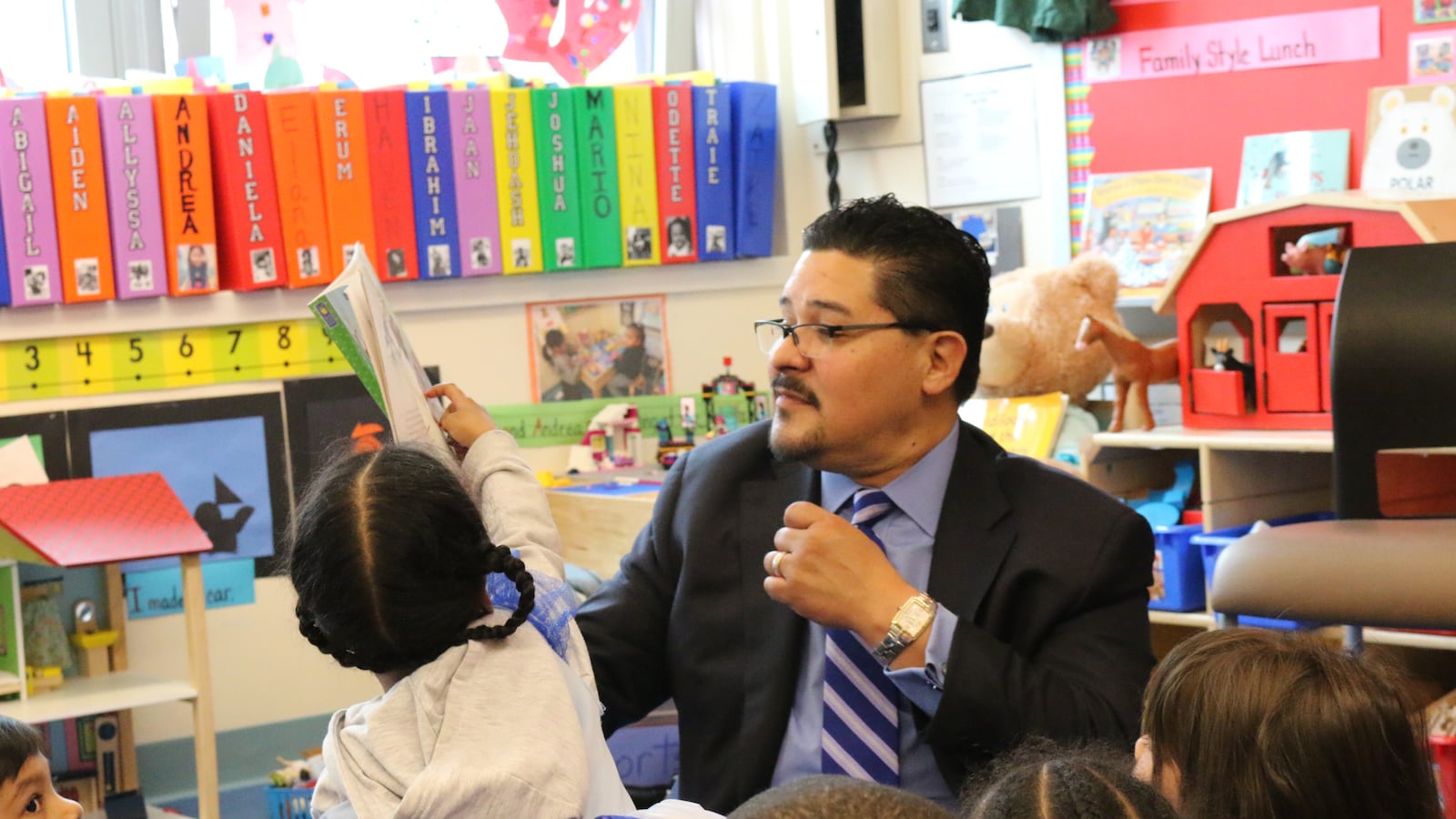In my experience leading school districts in four states across the U.S., I’ve noticed a trend in thinking about education like a series of shiny objects: What new initiative or trend will get results? What’s the upcoming announcement? What’s the latest and greatest rallying cry?
As any of the 80,000-plus teachers and administrators in New York City public schools could tell you, strong teaching and learning is more than this approach. Those of us who have taught in the classroom and led schools know that the kind of academic achievement that leads to success for our students in college, career, and life comes from rolling up your sleeves and diving deeply into the nuts and bolts of what goes on during class time. Getting there requires systems and structures that support a clear vision of how children will be taught and what they will learn.
In New York City, our instructional vision grows out of a mission of Equity and Excellence for All. We have a high bar of achievement for every student — this is excellence. And we are prepared to deliver the support that each of them need to meet that bar. This is equity.
So what does a unified teaching and learning strategy look like for more than 1,800 schools that collectively serve 1.1 million students?
First, we are strengthening core instruction. This means raising the bar in every subject area by instituting the use of clear protocols and complex texts in every school for every student. It means every child is reading and discussing those complex texts from different perspectives, learning to use writing as a tool for expressing ideas, and developing vocabulary skills to deepen their understanding of the world.
I recently witnessed young students in an elementary school, who, after reading a picture book featuring Dr. Martin Luther King’s “I Have a Dream” speech, constructed their own “dream boxes” in which they placed their own dreams and the path to achieve them. The activity was both intellectually rigorous and engaging. It required students to express their ambitions in writing using new vocabulary words and sentence structures, explain their thinking verbally to classmates, and to draw on the concepts presented in the picture book. It was a brilliant example of strong core instruction in action, one that is replicated in different ways every day across the five boroughs.
The second component of our Instructional Leadership Framework demands that we know every student well. We need to know each student’s knowledge, skills, and abilities, along with their identities and personal experience, if they are to achieve excellence. Schools will sharpen and deepen the incorporation of student data in the classroom. Accordingly, educators can use this information in a more precise and student-centered manner to create transformational learning moments.
In many schools, this is likely to manifest as less instructional time spent on administering assessments, and more time spent reflecting on outcomes and designing effective instruction in response. Imagine teachers working in teams to look at how many students have developed an essential reading skill, and how many are still striving to get there. Then, imagine that team planning ways to adapt instruction to ensure students who have the skill keep moving, and students who need additional reinforcement receive it in tailored ways, while still participating in the core instruction occurring in the classroom each day. This is the real work of teaching and learning.
The third element is using a shared and inclusive curriculum. As an educator, I know firsthand the value and importance of having a shared approach for lesson plans across grades. A third-grader who learns to do multiplication without understanding the concept underlying this skill will face a serious challenge when she walks into a fourth grade classroom where multiplication is taught differently. Our students should know that there are multiple roads to the right answer, and what really matters is understanding the concepts that get them there.
An inclusive curriculum means we leverage each student’s lived experiences and full identities as we design instruction. This is why we are adopting the evidence-based approach of Culturally Responsive-Sustaining Education, which makes students feel welcome and engaged, leading to deeper levels of learning.
In one Brooklyn middle school, the library was recently filled with books that reflected the lives and experiences of the children enrolled in that school, and book circulation went up by 70%! Right now, we are asking families, students, and communities across the city to help us spread that success system-wide by recommending new books for our NYC Reads 365 booklist. We hope all New Yorkers will share their favorites here.
Underlying the Instructional Leadership Framework is the belief that every child deserves a rigorous learning environment in every subject area. To do that, there must be strong teams of teachers and administrators leading this work at every school, and world-class educators who are delivering rigorous, relevant, and student-centered instruction in their classrooms every day. This work has already been happening at many schools across the city, and many more are seeking ways to further bring it to life.
The Instructional Leadership Framework demonstrates what we know and believe—that all students can learn at high levels. It is up to us to ensure that they do, and that teachers have the support to make that happen. So the next time you hear conversation about the latest trend in education, remember the real work of ensuring strong systems of teaching and learning is already underway in New York City public schools.
Richard Carranza is the chancellor of New York City schools.
About our First Person series:
First Person is where Chalkbeat features personal essays by educators, students, parents, and others trying to improve public education. Read our submission guidelines here.

